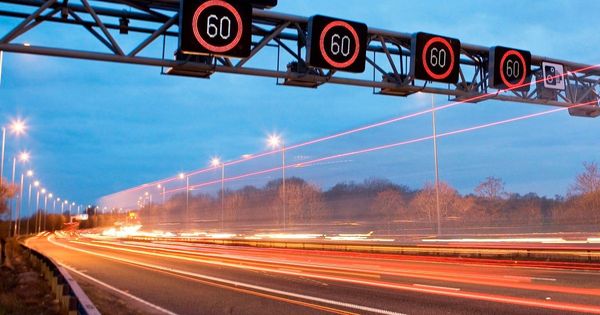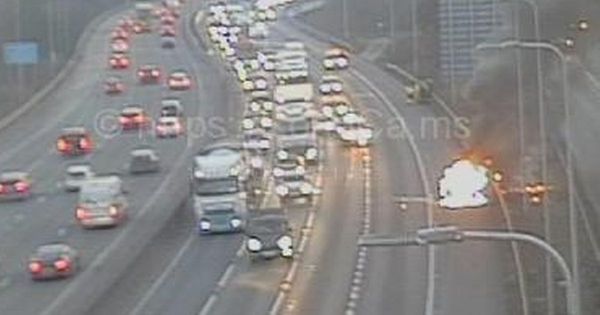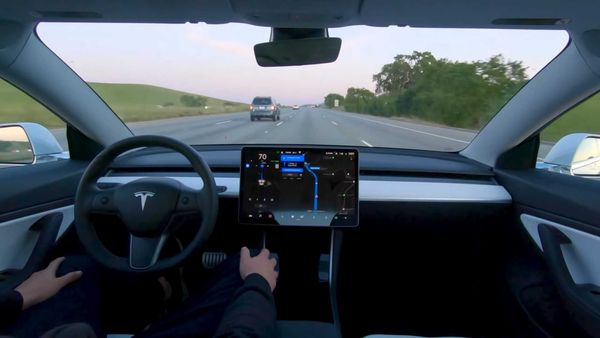"Lives were put at risk" after important safety technology failed across a string of UK motorways, it has been claimed. Stretches of roads in Yorkshire and the North East, the Midlands, Greater Manchester and the South West were affected by the issues on Saturday.
A whistleblower said lives could have been lost as a result of the problem which saw National Highways "temporarily losing the ability" to set motorway signs and signals. However National Highways chiefs insisted procedures to deal with the outage were set in place.
It added there were no reported emergency incidents during the period which ran from 12.35pm and lasted under of two hours. "This was resolved after one hour and 45 minutes," said National Highways in a statement.
"All signs that were already set, stayed on, and we took additional measures including increased patrols by traffic officers. There were no reported incidents during this time and there was no loss of Stopped Vehicle Detection or CCTV."
Then two days later, in a second, separate incident, radar technology called 'stopped vehicle detection' failed along eight miles of the M6 'smart motorway' just after rush hour in Cheshire. However that issue was as a result of a localised power outage and affected between junctions 18 and 19 of the M6, according to the Manchester Evening News.
That led to the loss of the stopped vehicle detection system, and the setting of warning signs and signals, and also lasted for an hour and 45 minutes from 10.15am. The radar technology, installed last year, enables stationary cars, vans and HGVs, or accidents, to be detected within seconds inside control rooms.
Units went live on the M62 smart motorway last April between junction 10 at the Croft interchange and junction 12 at the Eccles interchange, a section which uses the hard shoulder as a live lane. National Highways said the SVD technology enables warning signs on motorways to be quickly set, including red-coloured 'X' signals to close lanes. Speed limits can also be adjusted and displayed on signs.
Subscribe here for the latest news where you live
On the M6, National Highways said power was restored by Electricity North West at noon and an alternative CCTV monitoring network was used while the system was down. It said: "On Monday, February 13, a localised power outage at 10.15am resulted in the loss of Stopped Vehicle Detection, signs and signals on the M6 between junctions 18 and 19.
"Power was restored by Electricity North West at 12 noon. The outage didn't affect any other part of our road network. There were no reported incidents during this time. During the outage we took additional measures, including increased patrolling by our traffic officers. We were also able to carry out active monitoring of CCTV using an alternative system from our Regional Operations Centre."
Andrew Page-Dove, Operational Control Director at National Highways, said: "We have well-rehearsed procedures to deal with any issues which arise on our motorways. These issues were resolved quickly, and where necessary we took additional measures to limit any impact on drivers or traffic flow such as increased patrols and CCTV monitoring."
According to the whistleblower police, local authorities and contractors working on motorways were all alerted to the situations. National Highways, however, denied their claims the Saturday outage was caused by a failure of the 'Dynac' system, which runs the technology. "This was exceptionally dangerous," said the whistleblower.
National Highways says on its website SVD technology is used to detect stationary vehicles. All motorways where hard shoulders have been permanently converted to a live lane have the radar-based technology in place, which works to alert motorists to dangers ahead.
The radar units are installed at the sides of motorways and monitor flow in both directions. It was claimed the new technology would detect stopped vehicles 21 times faster than the previous average of seven minutes.
But National Highways chief executive Nick Harris told MPs this month that the Government-owned company was aiming to meet 'very challenging' performance specifications for SVD technology by July after a report by the Office of Rail and Road in December last year revealed it was 'not working as well as it should'.
Around 10% of England's motorway network is made up of smart motorways. However there have been long-standing safety fears, following fatal incidents in which vehicles stopped in live lanes were hit from behind.
National Highways says the roads are safer than conventional motorways. The Department for Transport has now halted the development of new smart motorways until five years of safety data has been collected for schemes introduced before 2020.










